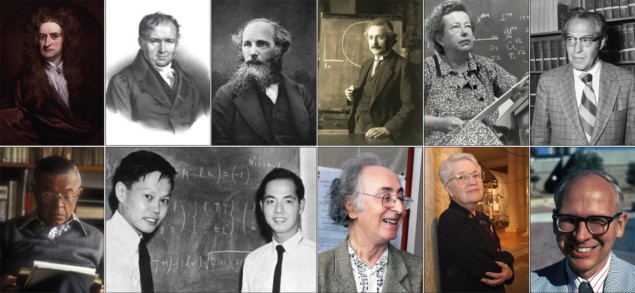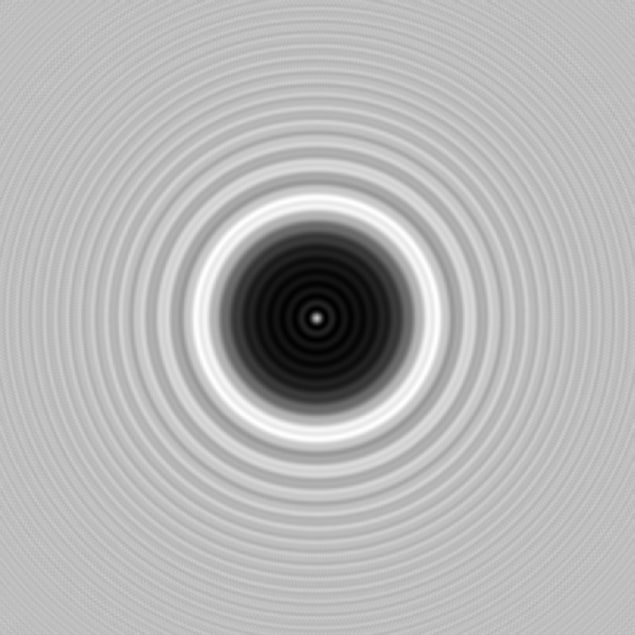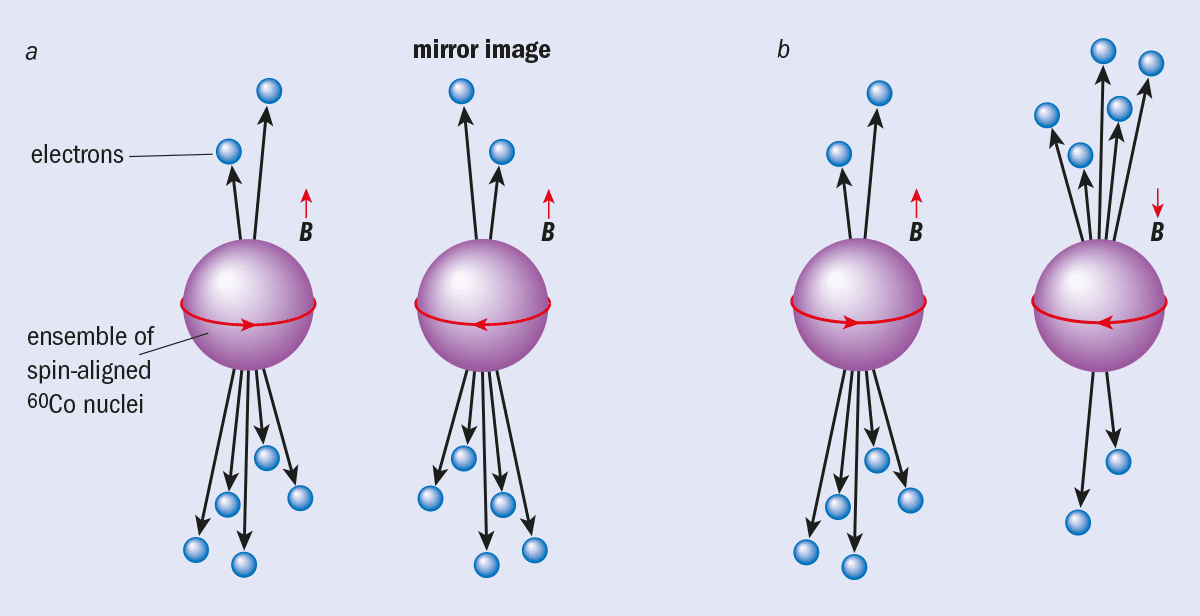Over the centuries there have been many theoretical physics predictions that have rocked our understanding of how the world works. David Appell highlights what he thinks are the top 10 of all time

Theoretical physicists stare at blackboards, do calculations and make predictions. Experimental physicists build equipment, gather observations and analyse data sets. (At least, that’s how it goes at the best of times.)
The two groups are reliant on each other – experimentalists may be trying to prove a theory is right (or wrong), or perhaps theorists are trying to explain experimental observations. As the British theoretical physicist Arthur Eddington once wryly put it, “Experimentalists will be surprised to learn that we will not accept any evidence that is not confirmed by theory.”
But often, everyone is somewhat lost in a world of big ideas that cry out for clarity. It is only every once in a while that someone from one of these groups produces a piece of work that cuts through the murkiness, delivering a crystalline result that instantly advances their field, and sometimes even creates it.
In this article I have chosen what I think are the 10 greatest theoretical physics predictions of all time, presented in chronological order. Of course, any such list is somewhat arbitrary and depends on the author’s predilections, opinions and knowledge. Any reader will no doubt disagree with some, maybe all. We’d love to hear your own thoughts, comments and opinions, so get in touch at pwld@ioppublishing.org.
Kepler’s three laws, by Isaac Newton (by 1687)
British physicist and mathematician Isaac Newton was an early proponent of prediction through mathematical calculation. By creating his “fluxions” in 1665 – what we today call calculus (Gottfried Wilhelm Leibniz did so too independently at about the same time) – he made it possible to predict the motion of objects through space and time.
To do so, Newton took ideas from Galileo Galilei about force and acceleration, from Johannes Kepler and his three laws of planetary motion, and from Robert Hooke about how a planet’s tangential velocity compares to the radial force it experiences, with the gravitational force an inverse square law directed towards the Sun. Newton united all these notions and added ideas of his own to devise his three laws of motion and his universal law of gravity.
These four laws brought order to the study of the physical universe and, just as importantly, the mathematical tools to model it. In particular, Newton was able to derive Kepler’s three laws – which famously indicated that planets move in ellipses not circles – from pure mathematics, at the same time using them as a test bed for his various assumptions. For the first time straight mathematics allowed calculations about, and predictions of, the motions of celestial objects, the tides, the precession of the equinoxes and more, while making it at last clear that terrestrial and celestial phenomena were ruled by the same physical laws.
The Arago spot, by Siméon-Denis Poisson (1818)
The French mathematician and physicist Siméon-Denis Poisson once made a prediction he was convinced was wrong. Instead, his prediction about the prediction was wrong, and he had accidentally helped demonstrate that light was a wave.
In 1818 Poisson was among a number of scientists who proposed that the French Academy of Science’s yearly competition should be about the properties of light, expecting the entries to support Newton’s corpuscular theory – that light was made up of “corpuscles” (little particles). However, Augustin-Jean Fresnel – a French engineer and physicist – submitted an idea that built upon Christiaan Huygen’s hypothesis that light was a wave, with each point on its wavefront the source of secondary wavelets. Fresnal proposed that all these wavelets mutually interfered with one another.

Poisson studied Fresnel’s theory in detail. He realized that Fresnel’s diffraction integrals implied that, at least for a point light source illuminating a disc or sphere, a bright spot would lie on the axis behind the disc. Poisson thought this was absurd as corpuscular theory clearly predicted there would be total darkness.
Poisson was so confident that, a version of the story goes, when the time came for the competition’s presentations, he stood up during Fresnel’s lecture and confronted him. François Arago – the mathematician and physicist who headed the competition’s committee – swiftly carried out the experiment in his laboratory with a flame, filters and a 2 mm metal disc attached to a glass plate with wax. To everyone’s surprise, and Poisson’s chagrin, Arago observed the predicted spot. Fresnel won the competition, and the speck has since been known as the Arago spot, Poisson spot or Fresnel spot.
Speed of light, by James Clerk Maxwell (1865)
In 1860 at King’s College London, UK, the Scottish physicist James Clerk Maxwell began to make deep progress in the fields of electricity and magnetism, converting the experimental ideas of Michael Faraday into mathematical form.
A series of publications culminated in the 1865 paper “A dynamical theory of the electromagnetic field” (Philosophical Transactions of the Royal Society of London 155 459). Here, Maxwell derived a set of 20 partial differential equations (they were not yet cast into the vector calculus notation familiar to us until Oliver Heaviside in 1884), alongside six wave equations, three for each spatial component of the electric field, E, and the magnetic field, B. Maxwell concluded that he could “scarcely avoid the inference that light consists in the transverse undulations of the same medium which is the cause of electric and magnetic phenomena” – that is to say, he had predicted that light is an electromagnetic wave.
The wave (phase) speed, v, Maxwell derived was:
where μ is a medium’s permeability and ε its permittivity. Maxwell took the permeability μ of air to be 1, and using a value of ε for air established by a charged capacitor experiment, Maxwell calculated that the speed of light in air is 310,740,000 m/s. He compared this favourably to Hippolyte Fizeau’s measured value of 314,858,000 m/s and Jean Léon Foucault’s 298,000,000 m/s, concluding his inference that light was an electromagnetic wave was correct.
Anomalous perihelion precession of Mercury, by Albert Einstein (1915)
In the 1840s the French astronomer Urbain Le Verrier carefully analysed the orbit of Mercury. He found that, instead of a precise ellipse as predicted by Newton’s laws, the perihelion of the planet’s elliptical orbit – its closest point to the Sun – is shifting around the Sun. The change is very slow, just 575 arcseconds per century, but astronomers at the time could only account for 532 arcseconds from interactions with other planets in the solar system, leaving 43 arcseconds unaccounted for.
The difference, however small, bothered astronomers. They proposed a range of solutions – an unseen planet, a near infinitesimal change to the exponent of 2 in Newton’s gravitational law, an oblate Sun – but everything seemed ad hoc. Then, in 1915, as he was finishing his general theory of relativity, the German theorist Albert Einstein was able to calculate the influence of curved space on Mercury’s orbit, deriving this additional shift of the perihelion precession as:
where a is the semimajor axis of the planet’s ellipse, T its period, e its eccentricity and c the speed of light.
For Mercury, this comes to exactly 43 arcseconds per century, precisely the missing amount. While strictly speaking this was a postdiction, it was nonetheless impressive. “Can you imagine my joy,” Einstein wrote to Paul Ehrenfest that year, “with the result that the equations of the perihelion movement of Mercury prove correct? I was speechless for several days with excitement.”
Second series of rare-earth elements, by Maria Goeppert Mayer (1941)
It’s not every day someone adds a new element to the periodic table, but German physicist Maria Goeppert Mayer went one step further and added an entire row.
While at Columbia University in the US – where she had to work without a salary because her husband was employed there – Mayer met Enrico Fermi and Harold Urey. Fermi was trying to puzzle out the decay products of uranium and elements that might lie beyond it, as element 93, neptunium, had just been discovered by Edwin McMillian and Philip Abelson. Fermi asked Goeppert Mayer to calculate the eigenfunctions of Erwin Schrödinger’s equation for the 5f electron orbitals of atoms near uranium (atomic number Z = 92) using the Thomas–Fermi model for the potential energy – a numerical statistical model developed independently by Llewellyn Thomas and Fermi in 1927 to approximate the distribution of electrons in high-Z atoms.
Numerically solving Schrödinger’s equation with the Thomas–Fermi potential for the radial eigenfunctions, Goeppert Mayer found the f orbitals start to be filled at critical values of Z (Z = 59 for 4f, and Z = 91 or 92 for 5f), with inaccuracies of a few units of Z expected due to the statistical nature of the model. At these critical values the atom ceases strong participation in chemical reactions. Mayer’s prediction verified Fermi’s suggestion that any elements beyond uranium were chemically similar to the already known rare-earth elements, thereby predicting the transuranic row. Goeppert Mayer would later share the 1963 Nobel Prize for Physics for development of the nuclear shell model.
Anomalous magnetic moment of the electron, by Julian Schwinger (1949)
During the Second World War, American theoretical physicist Julian Schwinger worked on wartime radar and waveguide technology, where he developed methods based on Green’s functions – a way of solving complicated differential equations by solving a simpler one giving the Green’s function, which can then be integrated to give the solution to the original. Complex in practice, it often can only be done perturbatively, but Schwinger was a master.
After the war, Schwinger turned his skill with Green’s functions to the pressing physics of the day, quantum electrodynamics (QED) – the interactions of electrons and light. After the work of Schrödinger and Paul Dirac, theorists now needed to include the self-interactions of the quantum, relativistic electron and photon fields to obtain the fine details of their behaviour. But calculations gave nasty infinities for measurable quantities like mass and charge. Schwinger was the first to hack through at least some of the mathematical minefields by using Green’s functions, and in a 1947 paper he gave his result for the so-called first-order radiative correction to the electron’s magnetic moment. His full theory culminated in a 1949 paper, with pages of dense equations predicting the first-order correction to be:
where α is the fine-structure constant (≈ 1/137) and μ0 the electron’s classical magnetic moment. This was quickly confirmed by experiment, and today the fraction α/2π resides atop Schwinger’s tombstone.
The establishment of QED – the most precise theory in science, whose fifth-order prediction for δμ for the electron has now been experimentally verified to 3 parts in 1013 – is important for the understanding of lasers, quantum computing and Mössbauer spectroscopy, and is the prototype on which the Standard Model of elementary particle physics is based on. Richard Feynman called QED “the jewel of physics”.
7.65 MeV energy level in carbon-12, by Fred Hoyle (1953)
In 1953 English astronomer Fred Hoyle made a prediction that he realized later in life was required because he, and all life, existed.
In the 1930s scientists such as Hans Bethe had established that stars get their energy from the fusion of atomic nuclei – of protons (hydrogen ions) into helium nuclei (alpha particles), then pairs of these into beryllium-8 (8Be). Beyond that process, scientists had figured out that nitrogen, oxygen and other nuclei formed from carbon-12 (12C). However, no-one knew how 12C arose from the unstable 8Be nucleus. The full path of how the elements arose from burning within stars or after the Big Bang were a mystery, yet 12C is all around us.
While the highly unstable 8Be nuclei would quickly decay back into two alpha particles, calculations proposing that three alpha particles combine to form 12C seemed to be ruled out, as the reaction’s probability is too low to explain the amount of carbon produced. However, Hoyle boldly predicted a new energy level in 12C, at 7.65 MeV above its ground state. This excited 12C state, known as the “Hoyle state”, was at just the right resonance to have been formed by 8Be reacting with an alpha particle. While the Hoyle state nearly always decays back into three alpha particles, on average once in 2421.3 decays it goes to 12C’s ground state, giving off the extra energy as gamma rays. The 12C atoms then either stay as they are or fuse with an alpha particle to make oxygen, and so on up the chain. When the star explodes in a supernova, carbon and other nuclei cool into atoms and populate the universe.
Some months after, an experimental group at the California Institute of Technology, led by Ward Wahling, found such a 12C state at 7.68 ± 0.03 MeV by doing magnetic analysis of the alpha particle spectrum from nitrogen-14 decay as they impacted 12C, thereby proving that Hoyle had correctly predicted the origin of one of the most important elements in the universe.
Parity violation in the weak interaction, by Tsung-Dao Lee and Chen-Ning Yang (1957)
Parity conservation – the idea that the world looks and behaves the same way whether viewed in a mirror or not – had been firmly established for electromagnetic and strong interactions by the 1950s. Almost all physicists expected the same to be true of the weak force. However, some decays of particles called kaons could not be explained using existing theories if parity conservation were true. The Chinese-American theorists Tsung-Dao Lee and Chen-Ning Yang therefore decided to look more closely at the experimental evidence for parity conservation in the known results of weak interaction physics. Surprisingly, they found none.

As a result, the pair formulated a theory that left–right symmetry is violated by the weak interaction. Working with experimentalist Chien-Shiung Wu, they devised several experiments to look at different particle decays that proceeded via the weak force. Wu got on the case straight away, and by testing the properties of beta decay in cobalt-60, she observed an asymmetry that indicated parity violation and therefore confirmed Lee and Yang’s prediction.
Overlooked for the Nobel: Chien-Shiung Wu
Lee and Yang won the 1957 Nobel Prize for Physics for their prediction only 12 months after their paper was published, one of the quickest Nobel prize awards in history. Wu, however, did not share in the prize despite confirming the theory, an oversight that has only grown more controversial as time has passed.
Josephson effect, by Brian Josephson (1962)
The 1977 Nobel-prize-winning physicist Phillip Anderson once recalled teaching Brian Josephson as a graduate student at the University of Cambridge: “This was a disconcerting experience for a lecturer, I can assure you, because everything had to be right or he would come up and explain it to me after class.”
But because of this relationship, Josephson was quick to show Anderson calculations he had made about two superconductors separated by a thin insulating layer or a short section of non-superconducting metal. He predicted that a “DC supercurrent” composed of pairs of electrons (Cooper pairs) could quantum tunnel from one superconductor to another, right through the barrier – an example of a macroscopic quantum effect.
Josephson calculated the form of the current and phase rate of change for such a junction to be:
J = J1 sin (ΔΦ)
where J1 is a parameter of the insulating junction called the critical current and thus J is a dissipationless current. Φ is the phase difference between the Cooper pair wave functions on opposite sides of the barrier, e is that charge on an electron and V the potential difference between the superconductors.
Experimental observation of the DC tunnelling current appeared in print about nine months later by Anderson and John Rowell of Bell Telephone Laboratories (now Nokia Bell Labs), and Josephson would go on to win the 1973 Nobel prize for his prediction. Josephson junctions are now used in a variety of applications, such as in DC and AC electronic circuits, and to build SQUIDs (superconducting quantum interference devices) – technology that can be used as extremely sensitive magnetometers and voltmeters, as qubits for quantum computing, and more.
Dark matter, by Vera Rubin with W Kent Ford Jr (1970)
“Great astronomers told us it didn’t mean anything,” the American astronomer Vera Rubin once told an interviewer.
She was talking about her and Kent Ford Jr’s 1970 observation that outer stars orbiting in the Andromeda galaxy were all doing so at the same speed. They were told to look at more spiral galaxies; the effect persisted. The galaxies’ rotation curves (the plot of orbital speed of visible stars within the galaxy versus their radial distance to the galaxy centre) were “flat”, in seeming contradiction to Kepler’s law. More alarming still, stars near the outer edges of the galaxies were orbiting so fast they should be falling apart.

Rubin led a team in which Ford built new observational instruments – in particular an advanced spectrometer based on an electronic photomultiplier tube that allowed their precise astronomical observations to be captured in digital form for analysis.
Rubin and Ford Jr’s observation led them to predict that there was some mass inside the galaxies responsible for the anomalous motions, something their telescopes couldn’t see but was there in quantities about six times the amount of the luminous matter present.
Not even emitting photons, it was dubbed “dark matter” in a suggestive study by Swiss astronomer Fritz Zwicky of the Coma galaxy cluster back in 1933, but Rubin and Ford had now provided the first strong evidence for what is sometimes also called “missing mass”. Calculations of temperature fluctuations in the cosmic microwave background, using the standard ΛCDM model of cosmology, reveal that the total mass-energy of the universe is 5% ordinary matter and energy, 27% dark matter and 68% dark energy. While a full 85% of the matter in the universe is non-luminous, it is still a mystery to us today and there are many experiments now trying to identify it.
- A letter to the editor by Barbarina Zwicky (the daughter of Fritz Zwicky) and another by Johannes Meyling concerning the final prediction in this article appeared in the May 2021 issue of Physics World magazine.



